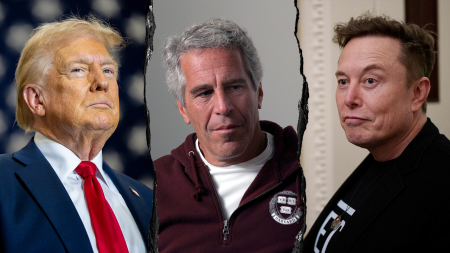The unexpected news of Syrian President Bashar al-Assad’s purported flight from Damascus ignited immediate reactions, most notably from former US President Donald Trump. Taking to his social media platform, Truth Social, Trump declared Assad’s departure and attributed it to Russia’s waning interest in protecting the Syrian dictator, linking this shift to Russia’s preoccupation with the ongoing war in Ukraine. Trump’s post emphasized the significant losses incurred by Russia in the Ukraine conflict, citing inflated figures of nearly 600,000 Russian casualties. He further characterized both Russia and Iran as weakened states, Russia due to the war and economic struggles, and Iran due to its ongoing conflict with Israel. Trump also called for an immediate ceasefire and negotiations between Russia and Ukraine, citing the immense human cost of the war and suggesting that the conflict could escalate into something far worse. He concluded by calling upon Russian President Vladimir Putin and China to intervene and facilitate a resolution.
Trump’s post reflects his characteristic style, blending declarations of inside knowledge with pronouncements on global affairs. His assertion of familiarity with Putin (“I know Vladimir well”) and his call for action from both Putin and China underscore his penchant for inserting himself into international diplomacy. However, the figures cited in his post regarding casualties on both the Russian and Ukrainian sides appear significantly inflated compared to estimates from credible international sources. This tendency towards exaggeration and a simplified view of complex geopolitical situations was a recurring feature of Trump’s communication style during his presidency.
The initial reports of Assad’s flight, seemingly confirmed by Syrian state television, painted a picture of a swift and decisive takeover by rebel forces. The announcement on Syrian state television, delivered by a group of men claiming to represent the “Operations Room to Conquer Damascus,” declared Assad’s overthrow and the release of all prisoners. They further called for the preservation of state institutions and proclaimed a “free Syrian state” inclusive of all sects and ethnic groups. This narrative, coupled with reports of public celebrations in Damascus, suggested a dramatic turning point in the long-running Syrian civil war.
However, the veracity of these initial reports remains questionable. While confirmed reports of Assad’s whereabouts were scarce, the claim that he had fled into exile with his family requires further verification. The sudden shift in control of state television and the declaration of a new “free Syrian state” by a previously unknown group raises concerns about the accuracy of the information and the stability of the situation. The Syrian civil war, characterized by complex alliances and shifting power dynamics, makes it challenging to ascertain the true extent of the reported changes.
The Syrian conflict, spanning nearly 14 years, has been a brutal and complex struggle, marked by devastating humanitarian consequences. The involvement of various regional and international actors, including Russia, Iran, and various rebel groups, has further complicated the situation. Assad’s regime, accused of using chemical weapons against its own people, has been internationally condemned. While the initial reports of Assad’s flight and the rebel takeover offered a glimmer of hope for an end to the conflict, the lack of independent confirmation and the fluid nature of the situation call for caution in interpreting these developments.
The alleged overthrow of Assad, if confirmed, would represent a seismic shift in the Middle East’s geopolitical landscape. However, the circumstances surrounding the reported events raise significant questions. The speed and apparent ease with which the rebels allegedly seized control of Damascus, coupled with the lack of confirmed information about Assad’s whereabouts, warrants a cautious approach. The long-term implications of this potential regime change, including the future of Syria’s governance and the role of various regional and international actors, remain highly uncertain. Further developments and independent verification are crucial to understanding the true nature and extent of the unfolding events in Syria.










